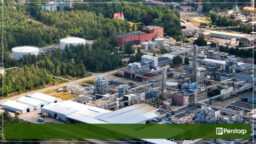Meat production
New Zealand is known the world over for the quality of its meat, and the importance of the industry to the country’s economy can’t be overstated. The sector accounts for over 13% of international trade.
ANZCO Foods is one of New Zealand’s largest meat producers. A strong focus on quality, animal welfare and food safety has seen ANZCO grow into a multinational concern, with more than 3,000 employees and a customer base that spans the globe. The company works very closely with the farming community to secure the best beef and lamb raised on New Zealand’s lush, green pastures.
The New Zealand meat processing industry – the challenge of overcapacity
A recent shift in land usage across New Zealand from meat to dairy has left the country’s meat processing industry with significant overcapacity. This has created a major challenge for ANZCO and the industry as a whole – there is simply not enough livestock supply to match processing capacity.
As a result, ANZCO and its industry peers have had to look very closely at their planning functions to ensure that they maximise revenue, and ultimately profit, from each animal processed. Brendon Williams, who led the implementation of the Supply Chain Planning and Optimisation solution explains, “With livestock supply being ANZCO’s primary bottleneck, we have to think of the supply chain as having customers at both ends. A significant component of ANZCO’s challenge is matching livestock supply with customer requirements, not just at a raw material level, but also at the supplier level.”
Brendon continues, “In many cases, it’s not enough that animals meet the raw material requirement of a customer. Livestock may also have to be sourced from a specific set of audited and accredited farms, greatly increasing the planning complexity. Also, we can never be sure that the raw material is fit for purpose until it is hanging on a hook. If it doesn’t meet the requirement it was purchased for, it still needs to be utilized in the best possible way with no planning lead time!”
“A significant component of ANZCO’s challenge is matching livestock supply with customer requirements, not just at a raw material level, but also at the supplier level.”
Brendon Williams,
ANZCO
A complex and multi-faceted planning environment
The overcapacity situation compounds an already complex planning environment. ANZCO’s business is heavily influenced by seasonal, climatic and global market conditions – including meat prices and how aggressively the competition is procuring livestock. On the demand side, ANZCO’s customers tend to place orders with very short lead times, with confirmation only a few weeks prior to dispatch. Given the much lengthier sourcing and processing time-frame, ANZCO must lean on a combination of sales forecasts and customer orders to support the planning process.
The perishable nature of meat brings its own challenges. Chilled meats achieve a significant premium compared to frozen supply, so ANZCO needs to ensure that it maximises the sale of each animal. Carcass balancing – the process of balancing demand across all the outputs, is key to achieving this. Ensuring that inventories of less desirable cuts are not building whilst attempting to meet demand for the more sought-after products is tricky, but absolutely essential for the company’s sustained profitability.
Management of storage and distribution costs, customer- and market-specific MLOR (minimum life on receipt) requirements, carcass grade, as well as inevitable demand prioritization situations all add to the challenge facing the planners.
A solution built on ANZCO experience and Optimity software
In 2012, Brendon Williams and his team embarked on a project to gain better control of ANZCO’s beef supply chain. At the time, the business model for beef was very traditional and commodity-based – procurement would purchase all the livestock they could get, production would decide the best use for it, marketing would try to sell it. What couldn’t be sold chilled would be frozen to extend shelf-life. This meant missing out on the chilled premium, and also incurring freezing and storage costs. The spreadsheet-based planning process was time consuming, and plans could become outdated very quickly. The different business functions involved were disconnected, and planning meetings could often become quite combative.
The goal was to introduce a centralised planning solution that would optimise the flows across the supply chain and serve as a common communication platform. The company had previously implemented a supply chain planning project for its lamb business that had convinced them that a supply chain optimisation solution could support the business on a broader scale.
ANZCO evaluated several software vendors, and decided to go with Optimity’s Supply Chain Optimizer. Brendon explains, “One of the key reasons for choosing Optimity was the intuitive presentation layer. The technology, together with their understanding of ANZCO’s business and the complexities faced by this industry, meant they were the right partner for us.”
“One of the key reasons for choosing Optimity was the intuitive presentation layer. The technology, together with their understanding of ANZCO’s business and the complexities faced by this industry, meant they were the right partner for us.”
Brendon Williams,
ANZCO
Maximizing the value of each animal
The overall aim for the project was to minimise waste, and extract maximum value from each animal. ANZCO wanted to align livestock procurement with both the processing and the sales & marketing functions. To achieve this, a supply and demand balancing model was developed in the Optimity Supply Chain Optimizer. The solution maps the end-to-end supply chain and addresses each of ANZCO’s key issues.
Christer Liden of Optimity outlines some of the features of the solution, “An important requirement for ANZCO is that inventory ageing can be represented over time. The Optimity solution ‘ages’ inventory and can determine whether it meets minimum life on receipt and market entry constraints, and thus the optimal point for shipment.” Future production surplus is also modelled in the same way. Christer explains, “That way the eligibility of surpluses to be sold to specific customers and into specific markets is easily visible for everyone involved, including marketing.”
He goes on to explain that the modelling and optimization capabilities of the Supply Chain Optimizer are also perfectly suited for carcass balancing. The software identifies how to optimally balance the carcass over time, as well as over different cuts. Critically, the software identifies the margin return on processing more animals, and the optimal number of animals to process for maximum profit.
Executive backing – key to a successful implementation
When discussing the implementation, Brendon highlights the importance of senior management support, “To ensure that we maximized value from this project, we needed to change some business processes. Change is always difficult, and communication is key here. We worked hard to convince the traditionalists in the business that the solution can and does work.” He adds, “The success of the project has been greatly assisted by strong executive management support and belief in the solution.”
A longer planning cycle provides flexibility
Today the Optimity Supply Chain Optimizer solution provides ANZCO with a new level of decision support. Prior to Optimity, the planning cycle generally wasn’t much longer than a week. “With Optimity we are just so much more flexible. The planning horizon has been extended to 8-12 weeks. When anything changes, it’s quick and easy to re-run the models and come up with a new plan. I cannot emphasise the importance of this enough.” says Brendon.
“The team now has foresight into how they’re going to fill the orders currently on the books, as well as visibility into surplus, so they can sell forward with more confidence. The key benefit here is that more orders are now being shipped chilled rather than frozen, and storage time and costs have decreased.”
Brendon Williams,
ANZCO
The outcome – increased visibility brings tangible benefits
The improved carcass balancing has led to a more optimised product mix and better margins. With clear insight into what’s available, the sales and marketing department can be much more proactive in their interactions with customers. Natsuki Yoshii, ANZCO’s Supply Chain Manager explains, “The team now has foresight into how they’re going to fill the orders currently on the books, as well as visibility into surplus, so they can sell forward with more confidence. The key benefit here is that more orders are now being shipped chilled rather than frozen, and storage time and costs have decreased.”
Brendon adds, “It’s been a journey, for sure, but one well worth the effort. The initial scepticism from many of the stakeholders has gradually been replaced by understanding and support. The visibility the Optimity plans are providing has really brought the business together and pulling in the same direction.” He continues, “The team at Optimity has been absolutely responsive at every turn. They’re as keen to see the project succeed as we are.”
Big plans for the future
ANZCO is currently looking at extending the solution horizontally across the business – with plans to apply Optimity across its prepared foods, ingredients and healthcare business and optimise returns on other by-products of the processing functions. They also see an opportunity to expand across the business vertically by modelling more processes, and in greater detail. The goal is to have the entire business operating off the same end-to-end plan rather than each business function working off individual plans.
Two other models are currently in development. The first is a production-based model that builds on the philosophy of ‘no surplus’. This will be used to optimise production and financial planning over a shorter planning horizon. The second initiative models the livestock supply side, moving from a push- to a pull-based model. Brendon concludes, “I firmly believe that Optimity will become a cornerstone application for ANZCO’s business. I can envisage a time when all production and logistics will be driven by the Optimity optimization tools.”
About ANZCO Foods
ANZCO Foods is one of New Zealand’s largest exporters with sales of NZ$1.3 billion and more than 3,000 employees worldwide. ANZCO process prime New Zealand beef and lamb in state-of-the-art, accredited facilities. The company is jointly owned by Itoham Foods, Nippon Suisan Kaisha, and the directors and management of ANZCO Foods.
Get all the latest industry trends, updates & news from Optimity
About Anzco
Christchurch, New Zealand
3,000
1.3bn NZ$















